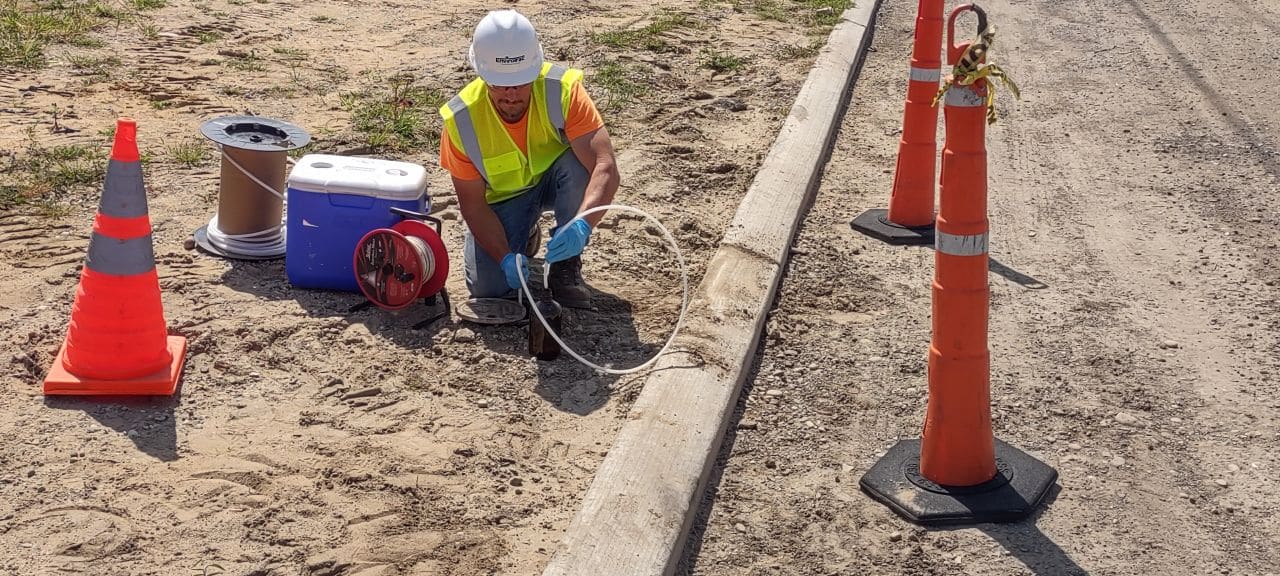
Does your NYC property or a property you want to purchase have an E-Designation for Hazmat, Noise, Air, or a Restrictive Declaration?
What is a NYC E-Designation?
An environmental designation is placed on a property due to zoning changes. This requires the property owner or potential owner to work with the NYCOER to investigate and satisfy the NYCOER requirements before building permits or a Certificate of Occupancy can be issued for the property’s redevelopment.
What is a Restrictive Declaration?
A Restrictive Declaration (RD) places conditions on a property’s future use and development. This declaration may be designed to control building design, public space provisioning, or to maintain low-income housing.
There are three types of NYC E-Designations:
Hazardous Materials
More commonly called Hazmat, refers to the Site’s physical characteristics. This designation means you must have a Phase I ESA performed to determine the historical impact on the property. Following the Phase I ESA, an NYCOER-approved Remedial Investigation Work Plan (RIWP) will need to be developed based on the historical findings to test the soil, groundwater, and soil vapor for contamination. The Phase II investigation results will be presented to NYCOER in the Remedial Investigation Report (RIR). Based on these findings, the NYCOER will need to be provided with a Remedial Action Work Plan (RAWP) and Construction Health and Safety Plan (CHASP) that will address the items discussed during the RAWP Scoping call, which will determine the requirements for addressing the contamination found at the property. Once the NYCOER has these items, they will issue the Notice to Proceed (NTP), allowing you to pull your permits for development. A QEP will need to be present to execute the Community Air Monitoring Plan (CAMP) and oversee the implementation of the RAWP. Once construction is complete, the NYCOER will be provided with the Remedial Action Report (RAR), and the Notice of Satisfaction (NOS) can be issued once the NYCOER approves the RAP.
Noise
This NYC E-Designation refers to the installation of the façade construction of the building. Properties with a Noise designation are required to meet a specific window/wall attenuation and alternative means of ventilation. The E-Designation number will provide the specific details for what Outdoor/Indoor Transmission Class (OITC) rating the windows will need to meet. A Noise Remedial Action Plan (Nosie RAP) will need to be provided to NYCOER before they issue the Notice to Proceed, allowing you to pull your permits for development.
Air
This NYC E-Designation refers to the heating of the building. This designation can prohibit the use of fuel oil-fired equipment or restrict the location of the boiler stack. The E-Designation number will provide the specific details for what specifics need to be met. An Air Remedial Action Plan (Air RAP) will need to be provided to the NYCOER before they issue the Notice to Proceed, allowing you to pull your permits for development.
NYCOER Voluntary Cleanup Program
The New York City Voluntary Cleanup Program (VCP) is a municipal program managed by the New York City Mayor’s Office of Environmental Remediation (NYCOER) “to ensure that sites with light to moderate levels of contamination” (known as brownfields) “can be cleaned up and redeveloped in a manner that protects public health and the environment.” The VCP is subject to the same procedures, standards, and regulations as per the New York State Department of Environmental Conservation (NYSDEC) DER-10. Once a property enrolls in the NYCOER VCP, the NYSDEC agrees that it has no plan to ask a developer to do more at its property than implement the OER-approved remedy.
Volunteers in the VCP are eligible for the following:
- Grants: Projects in the VCP are eligible for city grants for environmental investigation and cleanup of $25,000 to $50,000. City-supported affordable housing projects are eligible for $250,000 in city funds.
- Clean Soil Bank: Projects in the VCP can dispose of surplus clean soil for free, except for the cost of trucking soil between the two sites. VCP projects can receive clean soil at no charge.
- Hazardous Waste Fee Exemption: Projects in the VCP that generate hazardous waste can save up to $157/ton in taxes and fees that New York State assesses upon removal of hazardous waste.
- Green Property Certification: When a developer completes a cleanup in the VCP, it receives a NYC Green Property Certification plaque, a symbol that the property is one of the environmentally safest places to live or work in New York City.
EnviroTrac Ltd (EnviroTrac) has the knowledge and expertise to guide you and your team through the New York City Office of Environmental Remediation (NYCOER) E-designation Program or the NYCOER Voluntary Cleanup Program (VCP). EnviroTrac has been operating in the environmental consulting field for 30 years and can provide an array of services to get your project through the NYCOER process from start to finish. Commonly provided services associated with the NYCOER process include Phase I Environmental Site Assessments (ESAs), Phase II Subsurface Investigations, Remedial Investigation Work Plan Development, Remedial Implementation and Oversight, Off-site Waste Disposal, Remediation or Mitigation System Planning, Design, and Construction, Site Management Plans, and Final Engineering Reports. EnviroTrac also allows you to use your own disposal facility and construction crew if you choose not to use EnviroTrac for these tasks. EnviroTrac has a team of several Qualified Environmental Professionals (QEPs) and Environmental Engineers to develop the necessary NYCOER documents for each unique project. EnviroTrac can also assist with obtaining a Notice of No Objection (NNO) for minor alteration work types and projects where the property subsurface will not be disturbed. Contact EnviroTrac today for all your E-Designation needs.
| Pre-Application Meeting | Notice to Proceed |
| Remedial Investigation Work Plan | Pre-Construction Meeting |
| Health and Safety Plan | Remedial Action Report/Remedial Closure Report |
| Remedial Investigation Report | Post-Construction Meeting |
| RAWP Scoping Call | Notice of Satisfaction |
| Remedial Action Work Plan | Notice of Completion |

